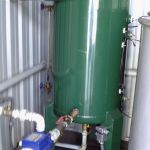Contaminated Areas
Preliminary Assessment
In this first stage, MultiGeo’s professionals perform an initial diagnosis in areas potentially contaminated (APs) and/or suspected areas of contamination (ASs); collecting detailed information available on each area through field inspections.
This step will collect information about each potential area in order to support the development of the next steps of contaminated sites management. It will also enable the documentation of existing evidences or facts that lead to suspect and/or to confirm the site contamination; allowing their classification as AS (Suspected Area), AP (Potential Area) or even exclude the area from the registry; establishing a initial conceptual model of each area; and verifying the necessity of adopting emergency measures in the areas.
The obtained data in the preliminary evaluation allow the update of the Register of Contaminated Sites and also indicate the sequence of steps that must be executed within the contaminated sites management in order to rationalize technical and economic resources.
Confirmatory Investigation
Based on the collected data from the Preliminary Evaluation such as the Conceptual Model and the Sampling Plan; MultiGeo’s team conduct drill holes for subsequent installation of monitoring drill to collect soil and groundwater samples. It aims to confirm or not the existence of contaminants in subsurface.
Thus, the obtained results in the confirmatory investigation are important to support the actions from the management agency or the environmental control agency in defining the responsibility for the contamination and the measures that must be taken to solve the problem.
After the collection of soil and groundwater samples, the interpretation of results (based on the analyzed samples) should be made by comparing the obtained values with the list of standard values, which are defined by the responsible agency for the contaminated sites management.
Detailed Investigation
In the stage of detailed investigation, the main objective is to quantify the contamination, i.e., to evaluate in detail the contamination source and the affected area characteristics through the determination of contaminated sites and volumes, types of contaminants and their concentrations. Likewise, should be defined the concentration plumes characteristics, such as their limits and propagation rate.
The detailed investigation seeks to understand the following aspects:
- geology and hydrogeology at local and regional aspects
- origin of contamination and its extension
- contamination evolution in terms of time and space
- migration routes of contaminants, exposure pathways and risk receptors

Human Health Risk Assessment
The main objective of the risk assessment stage is to identify and quantify the risks to human health caused by the impacted area, since human health and population safety must be prioritized.
The methodologies for risk assessment are based on human toxicology principles, physicochemical properties and environmental behavior of contaminants.
The identification and quantification of risks in a contaminated site will support the definition of achieve objectives in the remediation and it will also help the choice of corrective measures that should be adopted.
The baseline data for the risk assessment implementation consists of the collected information from the detailed investigation and the previous stages, increased by information about toxicology of contaminants involved, land use and occupancy and exposure variables set in the area.
MultiGeo has specialists in development of projects of Human Health Risk Assessments based on methodologies such as Risk Assessment Guidance for Superfund – Human Evaluation (USEPA, 1989), Risk Based Corrective Action (RBCA) and Spreadsheet Risk from CETESB.
Our team is prepared for the development of an Intervention Plan, that is technically defensible and also economically viable, which is based on risk characterization. Institutional, engineering, monitoring and/or remediation strategies are made and they will be used in the correct execution of remediation techniques and in the revitalization of contaminated areas.
Due Diligence
MultiGeo also develops studies and audits focused on economic feasibility information of large business based on the environmental issues.
The audits are conducted in order to identify the environmental issues that are in disagreement with the law, corporate policy, environmental management, and/or that can represent potential liabilities to future operation.
CONTAMINATED SITE REMEDIATION
Preliminary Feasibility Study of Remediation Alternatives
MultiGeo previously develops a technical-economic feasibility study based on established targets of Human Health Risk Assessment. The objective is to identify the best applicable technique taking into account economic, financial, physical and operational aspects; always trying to accomplish the deadlines, the reduction of chemical concentrations and the relation of cost-effectiveness.
The know-how of MultiGeo enables the application of worldwide acknowledged techniques, as well as emerging techniques within a justifiable legal support in the regulatory agencies.
Remediation Investigation, Pilot Test in Site or Laboratory, Remediation Projects
After the choice between the applicable techniques, MultiGeo conducts an investigation for remediation and tests, which will be used for application of the referred techniques and also will define the premises of the remediation project.
The field experts (engineers, biologists and geologists) are prepared to conduct the proper sizing and execution of environmental remediation project.

Main Techniques Developed
- Multi-Phase Extraction (MPE)
- Dual-Phase Extraction (DPE)
- Soil Vapor Extraction (SVE)
- Air Sparging (SPG)
- Pump & Treat
- Hydraulic Barrier
- Reactive Barrier
- In Situ Chemical Oxidation (ISCO)
- In Situ Chemical Reduction (ISCR)
- Bioremediation
- Natural Attenuation
Other Emerging Techniques
Our clients are from various segments such as:
- Landfills
- Terminals and seaports
- Construction in general
- Oil refineries and petrochemical plants
- Fuel distribution and fuel stations
- Industrial plants in several segments (chemical, pharmaceutical, automotive, food, metallurgy, steel, etc.)
- Mines and mineral processing plants





